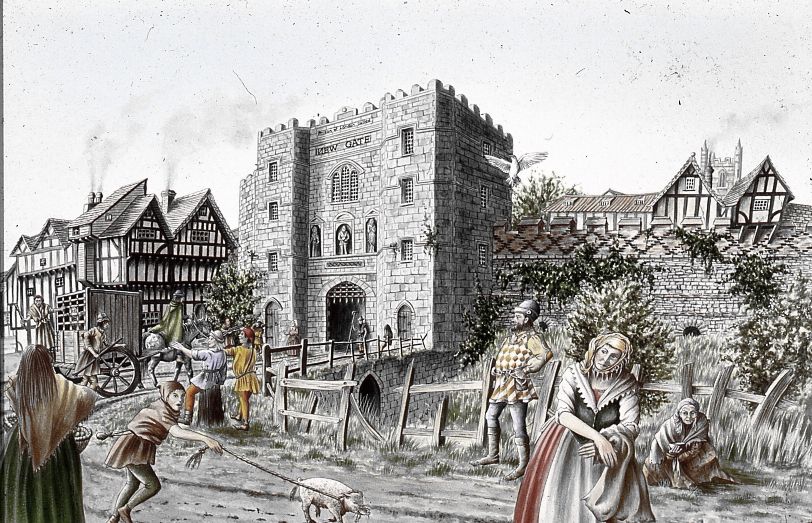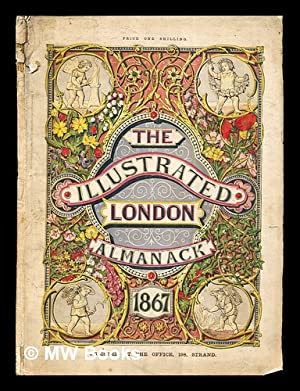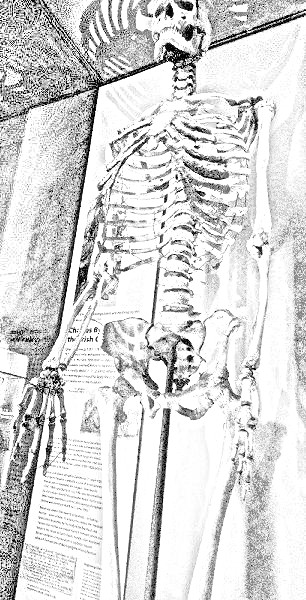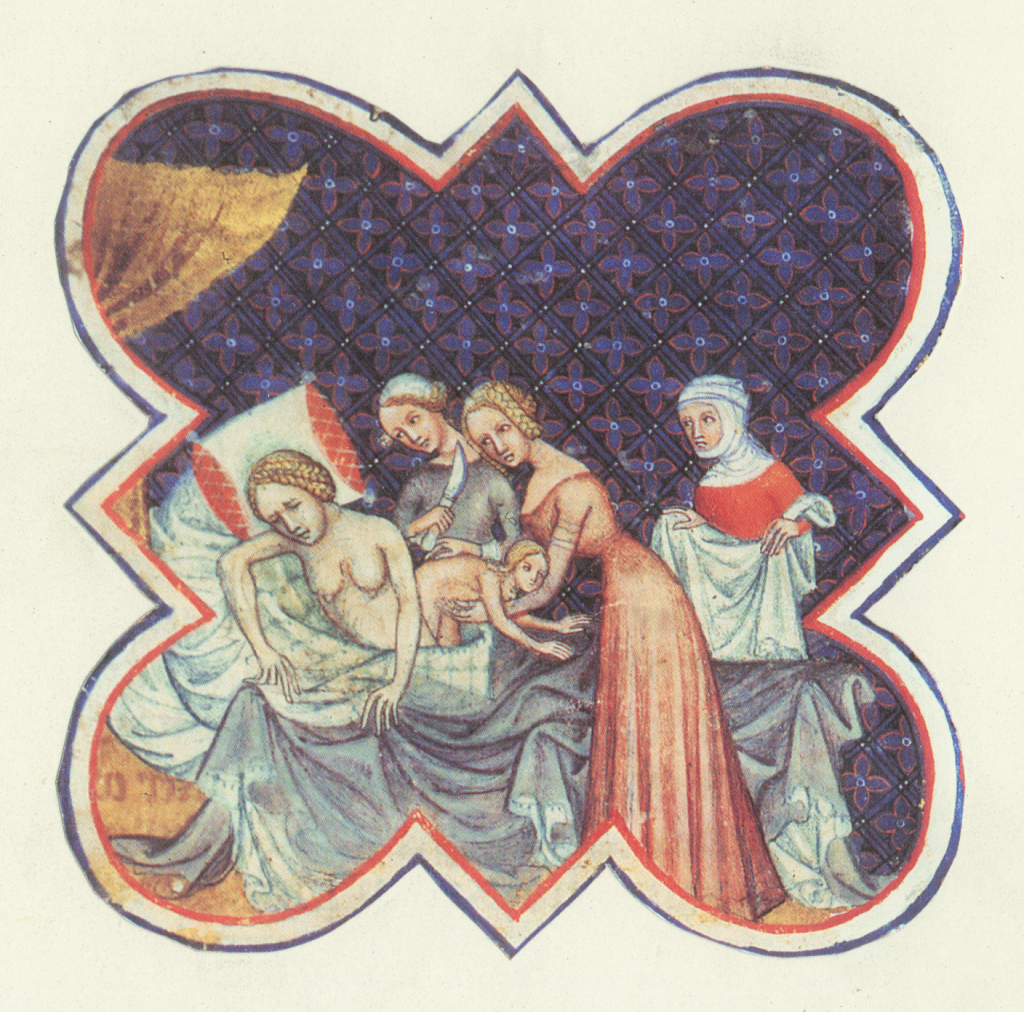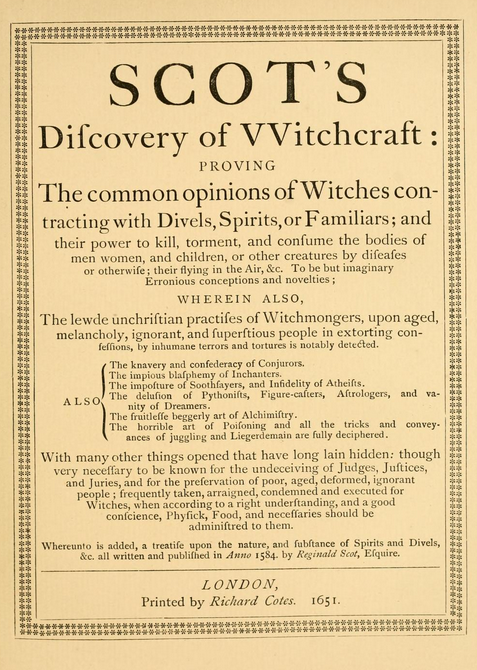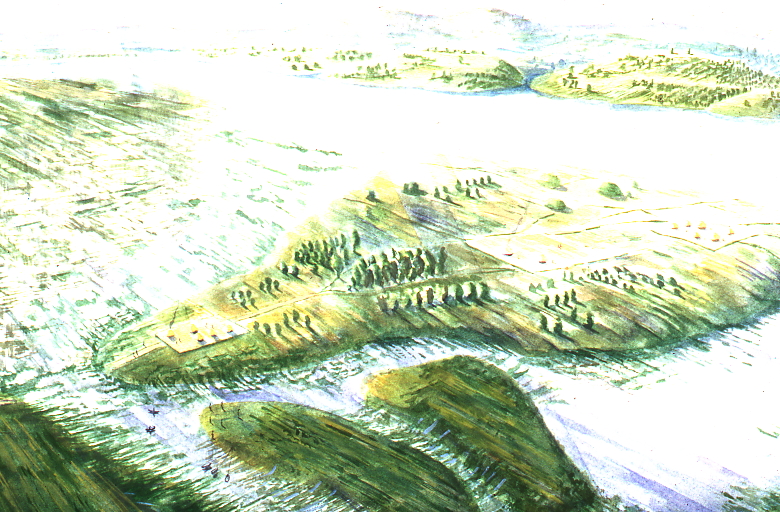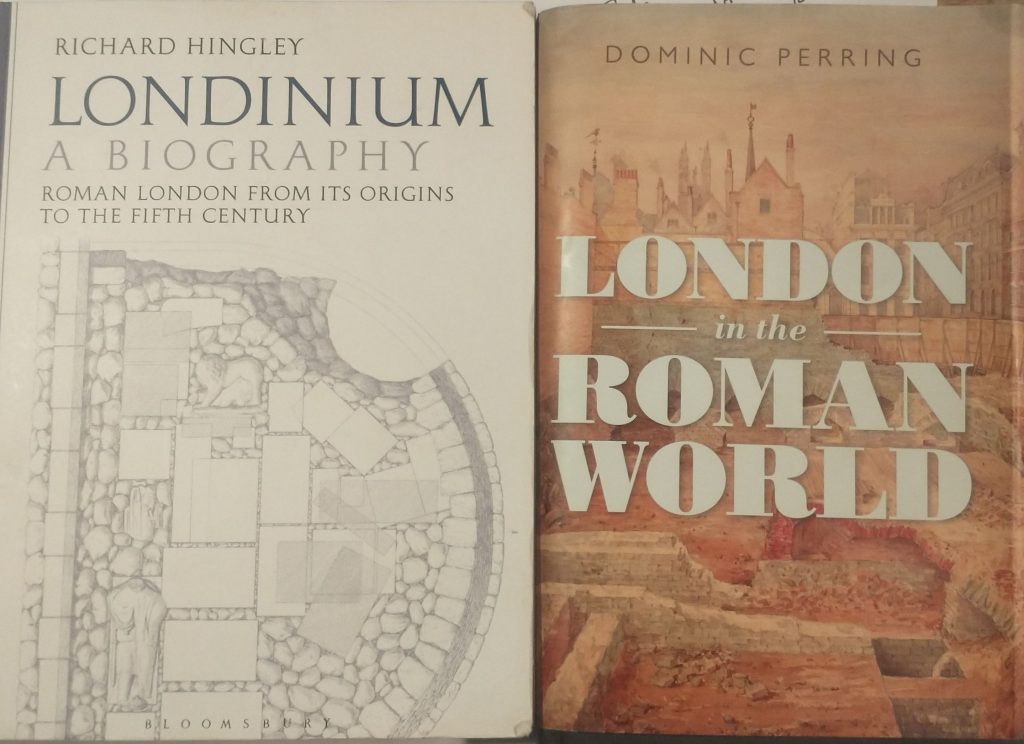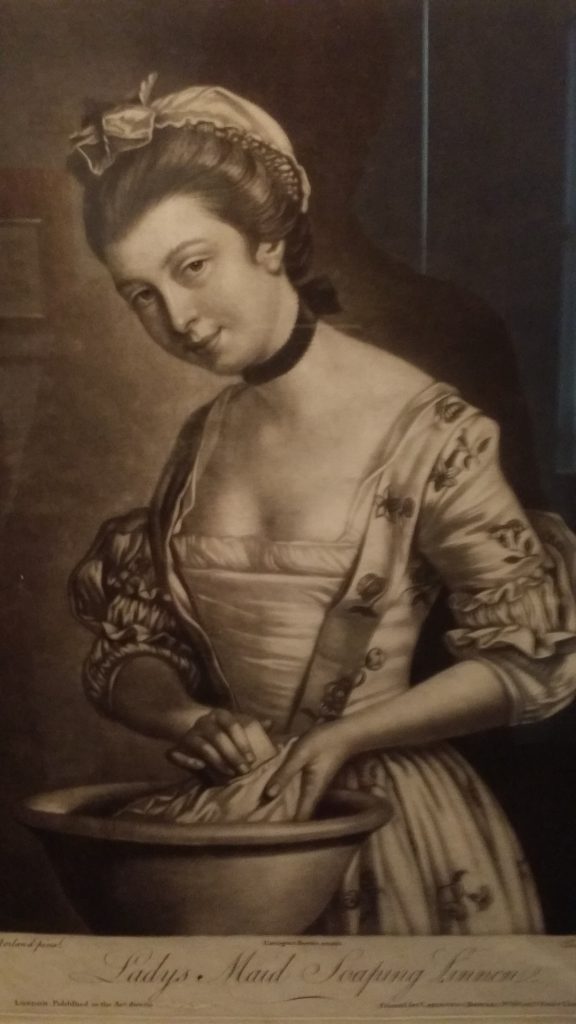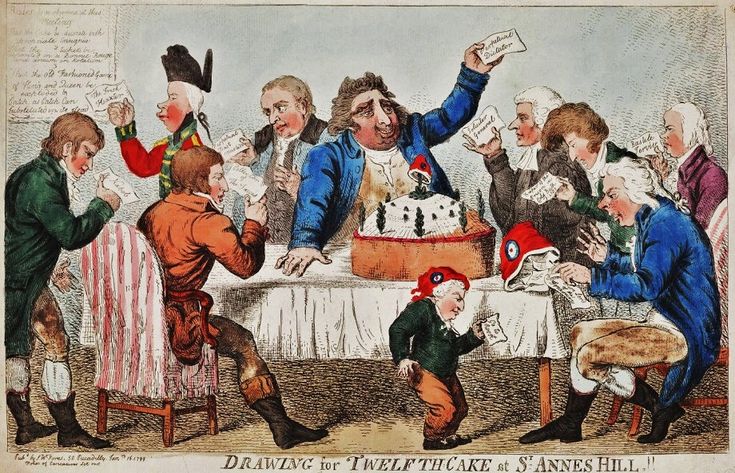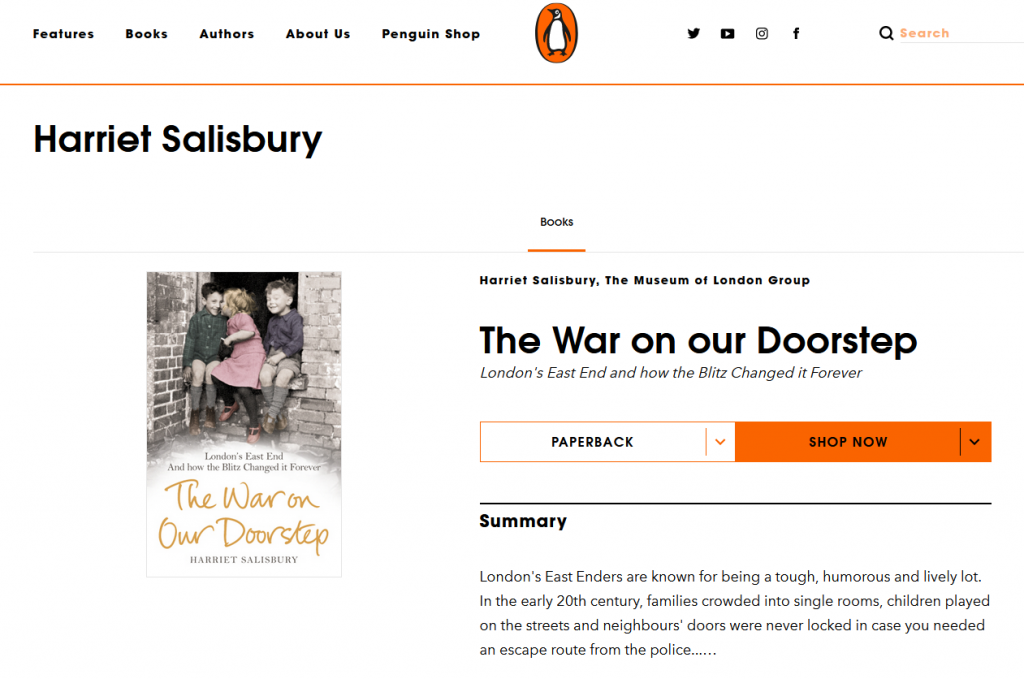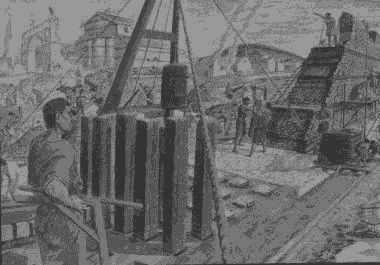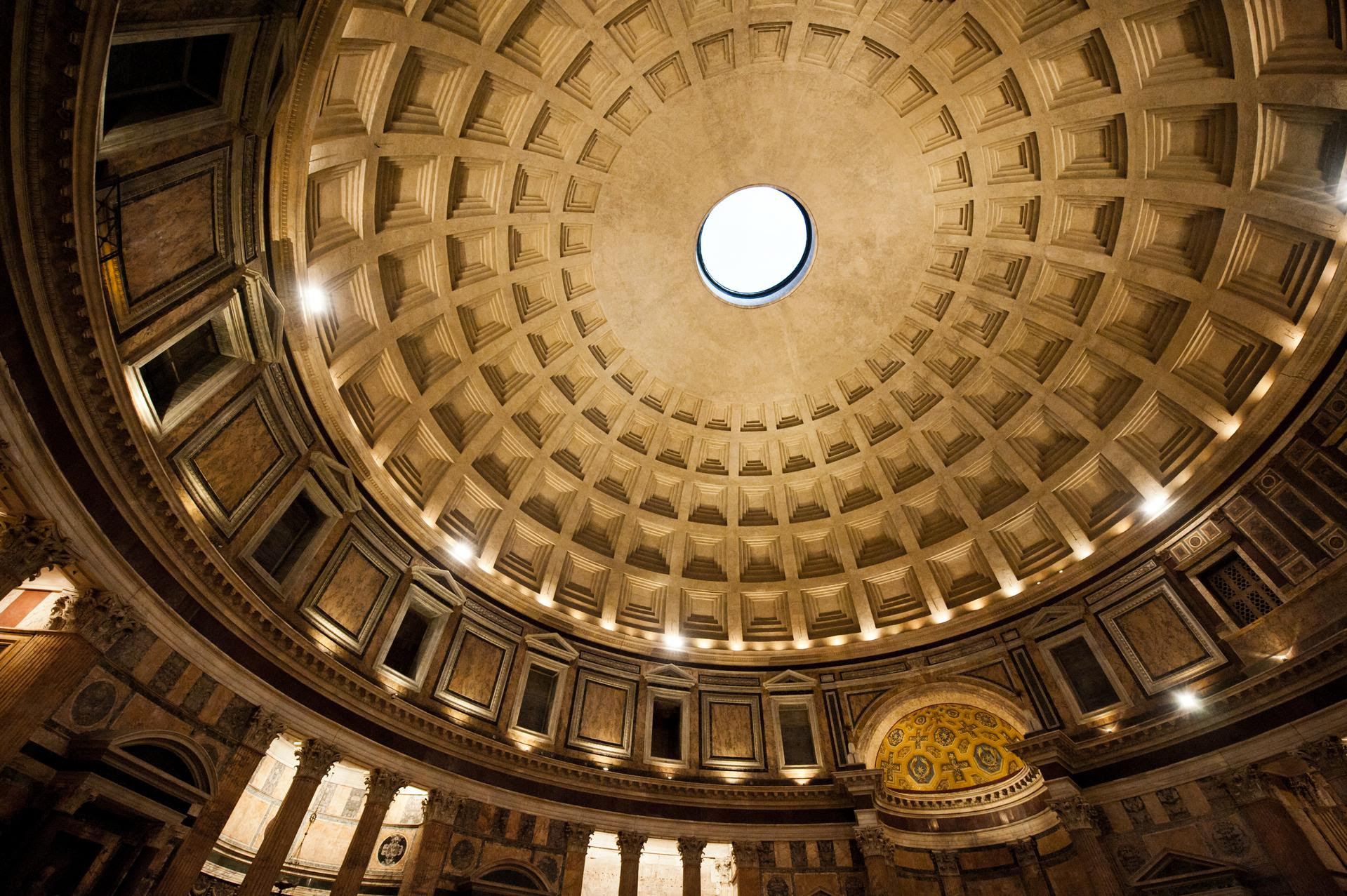
The Society of Antiquaries Salon Newsletter has a fascinating report on an analysis of the virtues of Roman Concrete. Working as an archaeologist in the City of London, Roman concrete (opus signinum and opus caementicium) has long been a fascinating subject upon which I have pontificated (without a huge amount of research).
I first came across it at the GPO site just north of St Paul’s Cathedral and what I remember is the contrast to the sandy mortar of 10th/11th Century St Nicholas Church which we were also excavating.
Roman cement, which was pink, was incredibly hard. Medieval mortar was yellow and soft. You could successfully get through the medieval stuff with a trowel or, if you had to, with your finger nail. But opus signinum required a kango pneumatic drill. Properly, signinum has fragments of pottery bonded into the concrete, but we also found it used without inclusions.
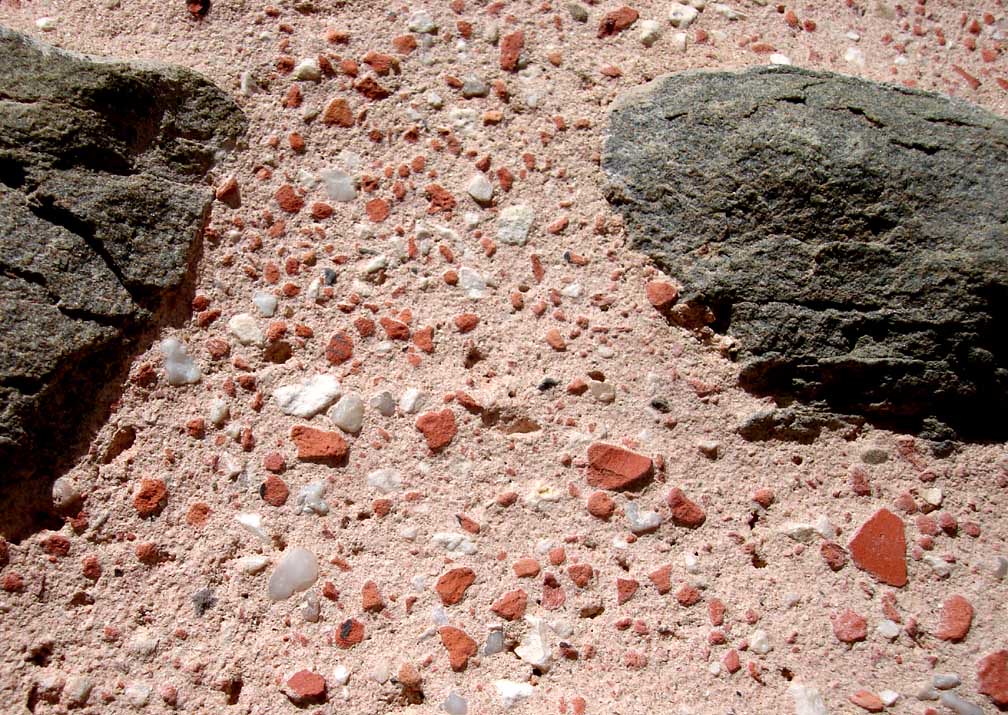
According to the 10 Books of Architecture by Vitruvius (Marcus Vitruvius Pollio) it should be made using volcanic ash which outcropped around Rome and Naples. Without volcanic ash in Britain, the Romans ground down tiles/bricks and added it to lime and sand to make a very effective cement. It was often then ‘reinforced’ by using a mixture of cement and rubble limestone in the core of a wall.
As medieval Londoners dug under the City during building work or while digging pits, they often struck unlucky by hitting some rock-hard Roman foundations. The legend spread that the Roman cement was so hard because it was made of a magical formula that contained Bull’s Blood. (It was also normally said to be built by Julius Caesar!)
The Roman cement was also made in a water-proof version, allowing Roman amphitheatres to be flooded for naval re-enactments. All proper Roman archaeologists have also paid homage by going to Rome to see the totally amazing domed roof of the Pantheon, commissioned by Augustus’ right hand man Marcus Agrippa. Marcus Agrippa (27 BC – 14 AD).
So, this article by the Salon gives some explanation as to how the concrete vault of the Pantheon roof can have stayed up for 2,000 years and defied inevitable cracking. I have copied it word for word, (I did once ask if they minded and they said no) but also give a link to the original below.
By the way, the GPO site was a landmark in Roman Archaeology because it completely changed the view of early Roman London when we discovered densely occupied Roman houses, a long way outside of the area thought to be the core of the early City. And Vitruvius’s book on architecture is well worth reading. I might add a sample tomorrow?. Finally, I remember reading that when the Custom House in London suffered a collapse after only a few years, it was rebuilt by Robert Smirke (who also bulit the Classical British Museum building) using a new formulae for cement was is said to be the first concrete in Britain to surpass the quality of the Roman original.

https://mailchi.mp/sal/salon-issue-547287?e=34bc1ba8ed#edhighlights
‘Analysis of Roman Concrete Reveals Self-Healing Properties
Many of us will have stood in the Pantheon in Rome and wondered how this beautiful structure can still be standing today. It is the largest unreinforced concrete dome in the world, built under the emperor Hadrian in 126 AD. Researchers have recently been analysing the content and technique of mixing Roman concrete to identify why it has lasted so long and they may have uncovered its secret.
Admir Masic, Professor of civil and environmental engineering at Massachusetts Institute of Technology, led the research project, working with Harvard University. In his paper published in Science Advances, Masic explains that Roman concrete contains millimetre-scale white lumps known as lime clasts, which may have helped seal up cracks, formed over time.
The Romans made concrete by made by mixing lumps of volcanic rock and other aggregates, together with a mortar such as volcanic ash, a source of lime (calcium oxide) and water. The lime clasts found were ‘porous with cracks’ and had most likely been formed at a high temperature in a low water environment. This suggests the quicklime was not mixed with water before it was added to the other ingredients as is the case in modern concrete, but was mixed with the ash and aggregates first. This ‘hot mixing’ produces heat, which helps set the concrete and reduces the water content around the lime clasts.
This means that, if subsequently, water seeps into the Roman concrete, it will dissolve the calcium carbonate and form new calcite as it passes through the lime clasts, which will help to seal up any cracks that have formed. Indeed, cracks filled with recently formed calcium carbonate have been found in Roman concrete.
Masic and his team tested this theory out by creating chunks of Roman-style concrete, containing cracks 0.5mm wide. They ran water over the concrete and in the samples containing lime clasts, within two weeks, the cracks sealed over with newly-formed calcite. Control samples of the concrete made without the lime clasts, did not seal.
Masic believes modern construction techniques could learn something from the Romans; ‘Roman-inspired approaches, based for example on hot mixing, might be a cost-effective way to make our infrastructure last longer through the self-healing mechanisms we illustrate in this study.’ An added bonus is that the development of a more resilient concrete ‘could help reduce the environmental impact of cement production, which currently accounts for about 8% of global greenhouse gas emissions’.
Image credits: Concrete Interior or the Pantheon, FLICKR / CC BY-SA 2.0′
